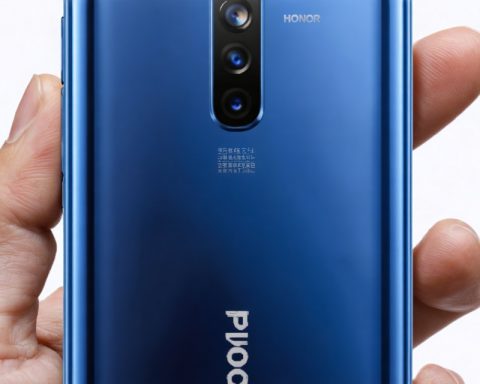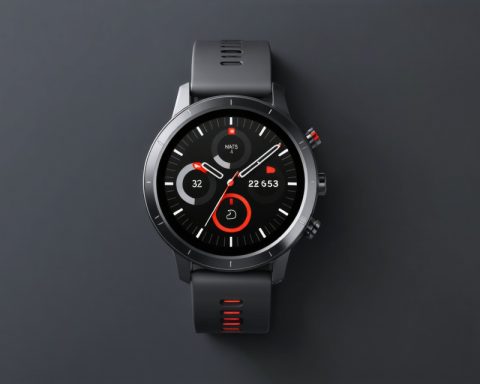- Premium smartphones (priced above $600) account for a quarter of all smartphone sales in 2024, up from 15% in 2020.
- Key attractions include cutting-edge processors, vibrant displays, sophisticated AI, and enhanced longevity.
- The U.S. leads in the premium smartphone market, with major players like Apple and Samsung, while China closely follows.
- India and South America experience rapid growth; sales increase over five times in India and 2.5 times in South America.
- Accessibility via financing and trade-ins contributes to the surge in high-end device purchases.
- Apple holds a dominant 66% share of the premium market but faces increasing competition from Samsung, Huawei, and Xiaomi.
- Ultra-premium phones ($1,000+) constitute over 40% of premium sales, reflecting sustained consumer demand for luxury.
In 2024, the allure of premium smartphones has captivated the market, with sleek devices priced above $600 carving out a quarter of all smartphone sales, up from 15% in 2020. This shift reveals a consumer appetite for high-end technology, drawn to top-of-the-line features like cutting-edge processors, vibrant displays, and sophisticated AI capabilities. These devices promise not just luxurious design but also enhanced longevity, making them a tempting investment despite an 8% price hike this year.
The U.S. proudly leads the global stage as a hub for these tech marvels, where giants like Apple and Samsung reign supreme. However, China isn’t far behind, with Huawei, Xiaomi, and others fueling competition. Meanwhile, burgeoning tech markets in India and South America are witnessing explosive growth in premium smartphone sales, seeing increases of over five times in India and 2.5 times in South America. This surge is fueled by more accessible financing and the growing popularity of trade-in programs, making high-end devices more attainable.
Yet, even as Apple commands a dominant 66% share of the premium market, the tech giant is not immune to the winds of change, dropping six percentage points as contenders like Samsung, Huawei, and Xiaomi intensify the competition. Notably, ultra-premium phones, with their audacious price tags soaring above $1,000, now represent over 40% of premium sales—a testament to an unabated consumer hunger for luxury.
This trend underscores a pivotal narrative: in the world of smartphones, consumers are willing to pay lavishly to stay ahead, marking a new era where device sophistication far outweighs cost.
Why Premium Smartphones Are Worth Every Penny in 2024
Introduction
In 2024, the premium smartphone segment has captured around a quarter of the global smartphone market. Devices priced over $600 have not only become more popular but have also seen their market share grow from 15% in 2020. This uptick highlights a strong consumer demand for high-end technology, driven by advanced features like cutting-edge processors, vibrant displays, and sophisticated AI capabilities. Despite an 8% increase in prices, these devices are seen as a worthwhile investment due to their luxurious design and enhanced longevity.
How-To Steps and Life Hacks
1. Maximizing Your Smartphone’s Longevity:
– Use a Quality Case and Screen Protector: Protect your investment from daily wear and drop damage.
– Regularly Update Your OS: Ensures you get the latest security patches and features.
– Optimize Battery Health: Avoid extreme temperatures, and try not to let the battery discharge completely.
2. Enhancing Smartphone Performance:
– Uninstall Unused Apps: Frees up space and reduces background processing.
– Use Built-In Optimization Tools: Many premium smartphones offer tools for RAM management and CPU optimization.
Real-World Use Cases
1. Professional Photography and Videography: Devices like the iPhone and Samsung Galaxy series are used by content creators for high-quality photo and video production.
2. Mobile Gaming: The advanced processors and high-refresh-rate displays of premium smartphones offer unparalleled gaming experiences.
Market Forecasts and Industry Trends
1. Premium Market Growth: The premium phone market is expected to continue its upward trajectory as more consumers value performance and design over mere cost.
2. Emerging Markets Surge: India and South America are showing significant growth, with more consumers opting for financing options making these devices more accessible.
Reviews and Comparisons
– Apple vs. Samsung: Apple leads with a 66% share of the premium market despite seeing a slight dip due to increased competition from Samsung, Huawei, and Xiaomi. While Apple focuses on ecosystem integration and design, Samsung offers diversity in features and price points.
– Huawei and Xiaomi: Known for offering high-end features at a slightly lower price range, appealing to cost-sensitive markets.
Controversies and Limitations
1. Sustainability Concerns: Premium smartphones often come with high environmental costs; however, companies are increasingly focusing on greener manufacturing practices and recyclability.
2. Data Privacy Issues: As AI capabilities expand, concerns about data privacy and security have grown, prompting manufacturers to enhance their privacy measures.
Features, Specs, and Pricing
– Key Features: High refresh rate displays (120Hz), advanced AI processing, multiple high-resolution cameras, 5G capability, and robust battery life.
– Pricing: Continued rise, with ultra-premium phones exceeding $1,000 now accounting for over 40% of the premium market.
Security and Sustainability
– Data Security Enhancements: Companies like Apple and Samsung are incorporating more secure chips and authentication methods such as facial recognition.
– Environmental Initiatives: Some companies have committed to carbon neutrality and use of recycled materials in their devices.
Insights and Predictions
– Innovation Pace: Expect rapid innovations in AI and camera technology, with improvements in real-time processing and augmented reality applications.
– Increased Competition: As new players and features emerge, competition will lead to more advanced capabilities in mid-tier models.
Pros and Cons Overview
– Pros:
– Superior performance and design
– Long-term software support
– Advanced features like improved cameras and connectivity
– Cons:
– Higher initial cost
– Potential overkill for basic users
– Long-term environmental impact
Actionable Recommendations
– Consider Future-Readiness: When purchasing, evaluate if the phone supports the latest tech trends like 5G and AR applications.
– Look for Trade-In Options: They can significantly reduce the cost of upgrading to the latest model.
For more information on premium smartphones, visit reputable technology sites such as Apple and Samsung. These platforms provide comprehensive insights into the latest smartphone releases and trends.
By understanding these aspects, consumers can make informed decisions that ensure their investment in a premium smartphone is both valuable and future-proof.







